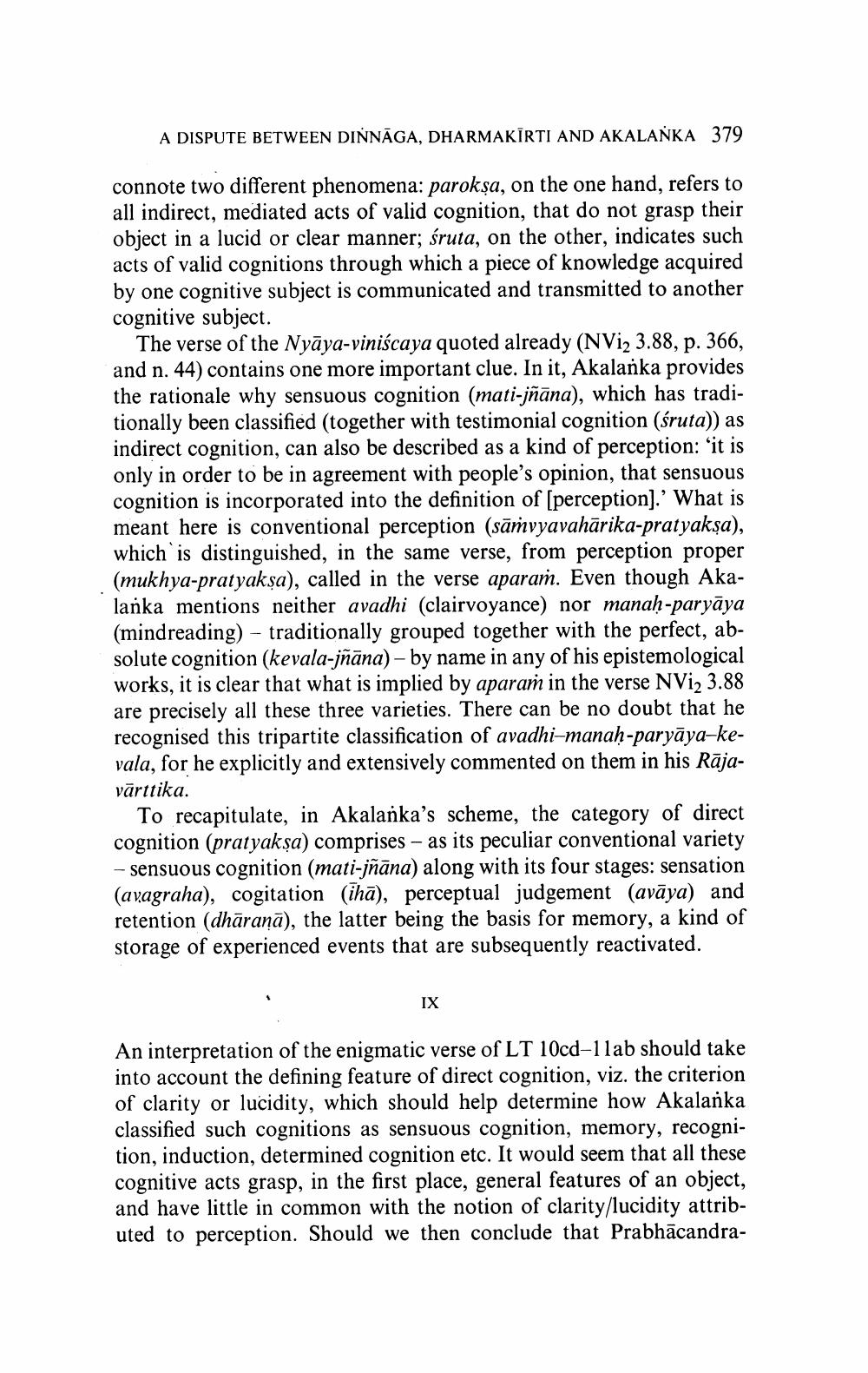________________
A DISPUTE BETWEEN DINNĀGA, DHARMAKĪRTI AND AKALANKA 379
connote two different phenomena: paroksa, on the one hand, refers to all indirect, mediated acts of valid cognition, that do not grasp their object in a lucid or clear manner; śruta, on the other, indicates such acts of valid cognitions through which a piece of knowledge acquired by one cognitive subject is communicated and transmitted to another cognitive subject.
The verse of the Nyāya-viniścaya quoted already (NVi2 3.88, p. 366, and n. 44) contains one more important clue. In it, Akalanka provides the rationale why sensuous cognition (mati-jñāna), which has traditionally been classified (together with testimonial cognition (śruta) as indirect cognition, can also be described as a kind of perception: ‘it is only in order to be in agreement with people's opinion, that sensuous cognition is incorporated into the definition of (perception).' What is meant here is conventional perception (sāṁvyavahārika-pratyakşa), which is distinguished, in the same verse, from perception proper (mukhya-pratyakşa), called in the verse aparaṁ. Even though Akalanka mentions neither avadhi (clairvoyance) nor manah-paryāya (mindreading) - traditionally grouped together with the perfect, absolute cognition (kevala-jñāna) - by name in any of his epistemological works, it is clear that what is implied by aparaṁ in the verse NVi, 3.88 are precisely all these three varieties. There can be no doubt that he recognised this tripartite classification of avadhi-manah-paryāya-kevala, for he explicitly and extensively commented on them in his Rājavārttika.
To recapitulate, in Akalanka's scheme, the category of direct cognition (pratyakşa) comprises - as its peculiar conventional variety - sensuous cognition (mati-jñāna) along with its four stages: sensation (avagraha), cogitation (ihā), perceptual judgement (avāya) and retention (dhāranā), the latter being the basis for memory, a kind of storage of experienced events that are subsequently reactivated.
IX
An interpretation of the enigmatic verse of LT 10cd-11ab should take into account the defining feature of direct cognition, viz. the criterion of clarity or lucidity, which should help determine how Akalanka classified such cognitions as sensuous cognition, memory, recognition, induction, determined cognition etc. It would seem that all these cognitive acts grasp, in the first place, general features of an object, and have little in common with the notion of clarity/lucidity attributed to perception. Should we then conclude that Prabhācandra




